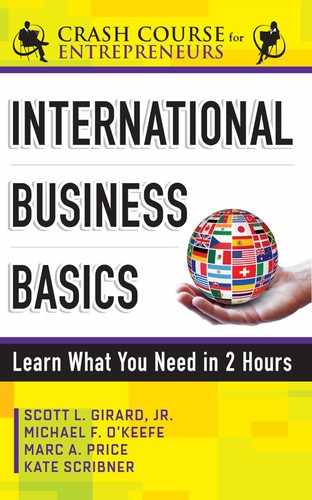Tariffs and Quotas and Trade, Oh My!
Just the basics, so you can see
if you need to dig deeper.
TO MANY ENTREPRENEURS, even those exploring international business, tariffs and quotas are subjects they skim past in the news. And in fact, their goods may not be affected by them. But it’s smart to be informed, and you may in fact be affected. So here’s your starter course.
What is a tariff?
It’s a tax or a fee placed on the import or export of goods. Today, tariffs are heavily debated in various economic theories, with the arguments focusing, as ever, on protectionism vs. free trade. Tariffs have a strong connection with various political movements and have been very controversial throughout history. Well-known examples of tariffs include the British trade restrictions which led to the Boston Tea Party and sparked the American Revolution in the 18th Century, and the US’s Smoot-Hawely Tariff Act, which significantly increased tariffs just as the Great Depression of the 1930s was beginning. This tariff sparked immediate retaliatory tariffs by most of the country’s trading partners and is widely believed to have significantly contributed to the severity and length of the Depression.
Since World War II, the general view of free trade has been more positive and tariffs have been steadily reduced, playing a smaller role in international business and fiscal policy. However, there are still some significant tariffs in place on items like paper clips, canned tuna, sneakers, peanuts, tires and steel.
Countries use tariffs to protect a particular industry and to raise revenue. The government may decide to protect a specific industry because it is a newly established or developing industry (in the US, think of renewable energy technologies); it is an inefficient but critical industry (steel, agriculture); or because foreign companies are “dumping” in the industry, meaning that the foreign companies are flooding the market with below-market-value priced products with the intention of monopolizing the industry. The added cost to an import will make it easier for domestic products to compete and the added cost to an export will make it more likely that the good is not exported to that location.
Tariffs can be charged as a percentage of value or as a flat fee based on quantity. The revenues from the tariff go directly to the government. At one time this was the largest source of income for the US federal government.
What is a quota?
Quotas are another economic government control measure used primarily to protect domestic producers and industries. Quotas are set by the government and specify an exact quantity of a particular good that may be exported or imported. They are a strongly protectionist control measure and are viewed as potentially harmful to a free-market economy, as they do not allow for any competition from foreign products and result in higher prices to consumers. Quotas are also called “non-tariff trade barriers”. The history of trade quotas is very similar to that of tariffs—a popular, but controversial fiscal tool whose use has declined significantly after World War II.
There are a number of key industries in the US that still have substantially limiting and controversial quotas in place. Those industries include sugar, tobacco, cotton, beef, anchovies, olives, Mandarin oranges and brooms. Other countries protect other industries, so check on their positions.
Fortunately, unless you are in a specifically regulated industry, the current tariffs and quotas should have very little effect on your business planning. If you are in one of those particular industries, then you will need to forecast any changes in trade policy in order to position your business for success.
M.R.M.
